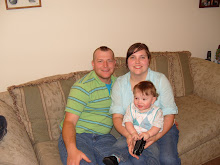Applying the social learning theory in a classroom is present in most classrooms today. The classroom is a melting pot of many different aspects of different theories. One theory in a whole is not relevant to a 21st century classroom. We as teachers are asking our students to do more and more social learning. We have expected behaviors and outcomes when giving a task, and we rely on the students to adapt and learn socially to complete these tasks. We ask them to model appropriate behaviors in their groups to show their peers what is desired.
Cooperative learning has an important place in today's classrooms. As stated by Hubbell, Kuhn, Malenoski, & Pitler students need, "To be prepared for the fast-paced, virtual workplace that they will inherit, today's students need to be able to learn and produce cooperatively" (p.139). There are many generalizations about cooperative learning. The recommendations would be to use different criteria for grouping, use formal, informal and base groups, keep group size down, and combine cooperative learning with other styles as well (p. 140). There are many components to cooperative learning that relate to social learning. Students have to have interaction with their peers. They will foster their interpersonal and group skills such as communication, leadership, and conflict resolution. They will be required to reflect as a group on their task when finished. These are life skills that they will be able to transfer over into the work force.
Technology can play a part in cooperative and social learning. Technology tasks are usually a group task. It is a vital role of cooperative learning. Studies have proven that technology collaboration gives the students a increase in effect size (p. 141).
Using multimedia and web enhanced tools are a positive way to use technology in cooperative learning. ePals is an excellent way for students to interact with other students. It is the Internet's largest community of collaborative classrooms. They share many projects, cultural experiences, and language learning. Using a webquest or producing a website are cooperative and social tasks. Students can work together to gather the information to use these sites.
When a teacher is planning for a technology project the first thing that should come to mind is how can I group my children for this project. Lay out social goals along with the learning goals for each group. The groups can assign roles for each students as to work cooperatively together in a flowing manner. It is important to "model" appropriate behaviors for the students before the project starts. A rubric is a great tool to let students know the expectations
Brandy Rainey
Thursday, April 1, 2010
Subscribe to:
Post Comments (Atom)

Brandy,
ReplyDeleteI agree that rubrics are great tools; however, I find it challenging to create them. I feel as if I need training, as silly as it may sound. Students know exactly what is expected when presented with a rubric upfront. In addition, it makes grading all the less time consuming.
Melissa
Brandi,
ReplyDeleteYou are right. The key to cooperative groups is pre-teaching expectations. Do you have any suggestions for creating rubrics for non readers and writers?
Julie
You are on the money when you connect social learning to life skills. Today, we offer students so much to make them well rounded. I used to teach elementary school and can not believe all the the content that children are exposed to in the classroom.
ReplyDeleteSocial learning would be a great method to incorporate at all levels, Students would acquire natural increasing growth to collaborate ad use technology. These skills are so vital in the real world.
Jay
Julie,
ReplyDeleteI went to a rubric training course that showed us how to make rubrics. One suggestion is to use pictures of expectations and smiley faces straight faces and sad faces. They seem to understand those things.
Brandy Rainey